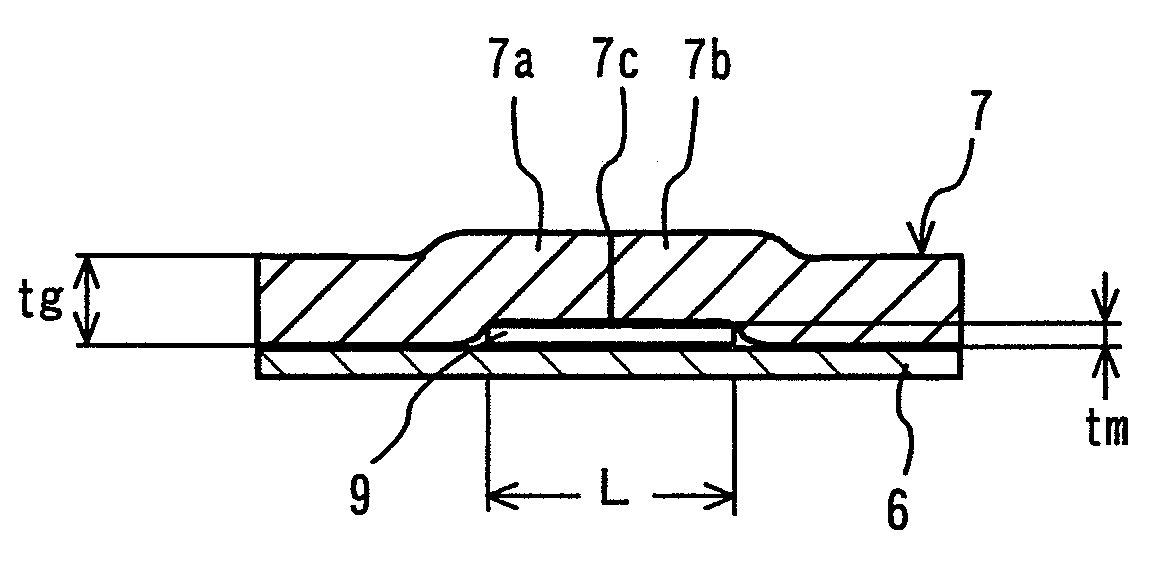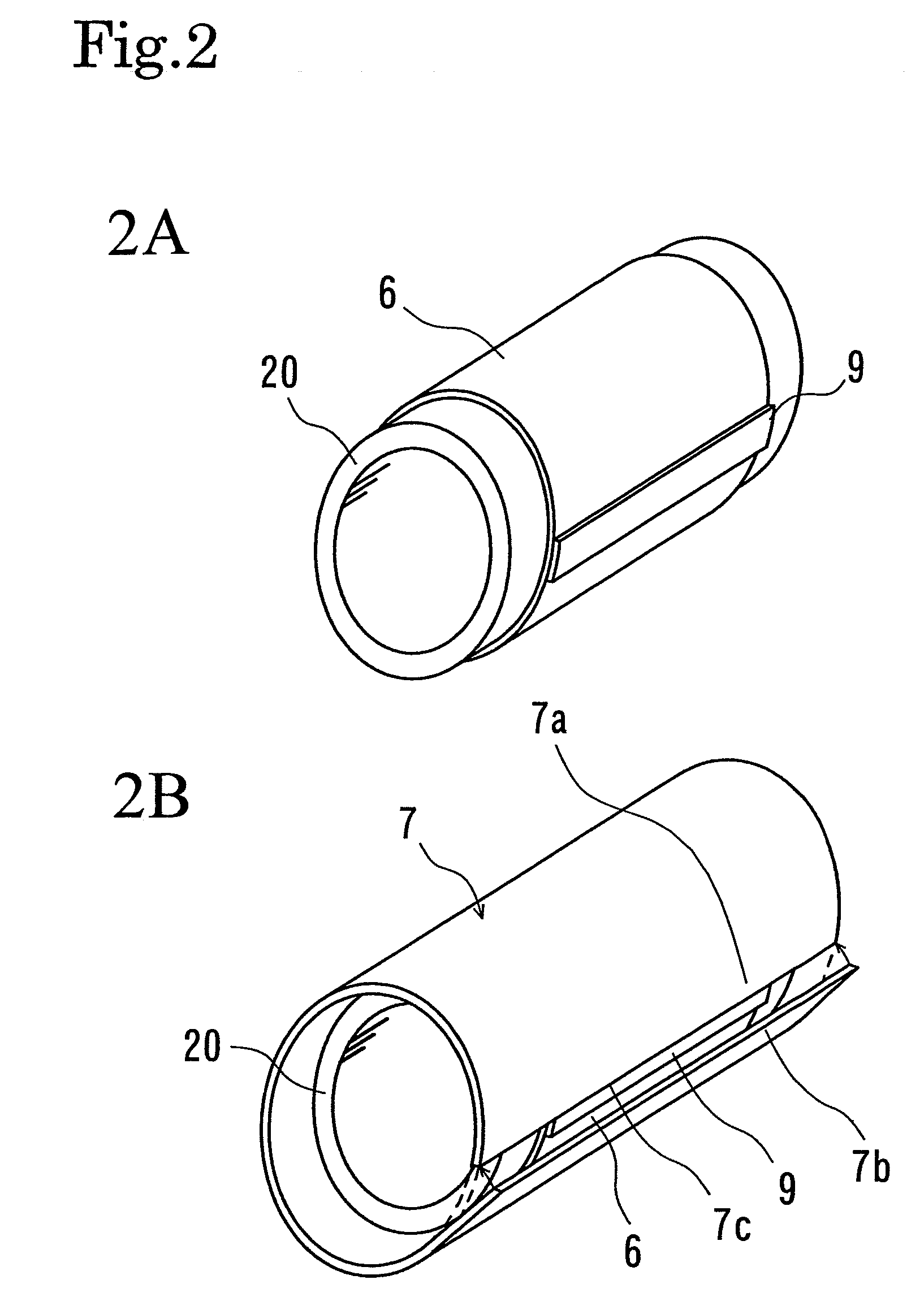Method of producing pneumatic tire
a pneumatic tire and tire body technology, applied in the field of pneumatic tire production, can solve the problems of blisters on the inner surface of thermoplastic resin film, the thermoplastic resin film has no air absorption ability, and the butyl rubber is difficult to achieve the weight reduction when using butyl rubber, so as to improve the uniformity of the tire, prevent blisters, and reduce the durability of the tire
- Summary
- Abstract
- Description
- Claims
- Application Information
AI Technical Summary
Benefits of technology
Problems solved by technology
Method used
Image
Examples
examples 1 and 2
[0039]Four types of green tires (Examples 1 and 2, Conventional Example, and Comparative Example) each having a tire size of 11R22.5 and a tire structure shown in FIG. 1 were formed. Specifically, 10 green tires of each type were formed, each by using a cylindrical thermoplastic resin film (having a 0.2 mm thickness) as an air permeation prevention layer, by winding a tie-rubber sheet having a 2.0 mm thickness and a carcass layer thereon, and by performing a splicing process. Moreover, these four types were formed to be different from one another, as shown in Table 1, in the splicing method performed on the foregoing tie-rubber sheet, the presence or absence of an auxiliary rubber sheet, and the thickness (tm) and the circumferential length (L) of the auxiliary rubber sheet.
[0040]The same rubber composition as that of the tie-rubber sheet was used for constituting the auxiliary rubber sheet. The rubber composition used in Example 2 was one in which 1.0 part by weight of vinylon shor...
PUM
 Login to View More
Login to View More Abstract
Description
Claims
Application Information
 Login to View More
Login to View More - R&D
- Intellectual Property
- Life Sciences
- Materials
- Tech Scout
- Unparalleled Data Quality
- Higher Quality Content
- 60% Fewer Hallucinations
Browse by: Latest US Patents, China's latest patents, Technical Efficacy Thesaurus, Application Domain, Technology Topic, Popular Technical Reports.
© 2025 PatSnap. All rights reserved.Legal|Privacy policy|Modern Slavery Act Transparency Statement|Sitemap|About US| Contact US: help@patsnap.com



